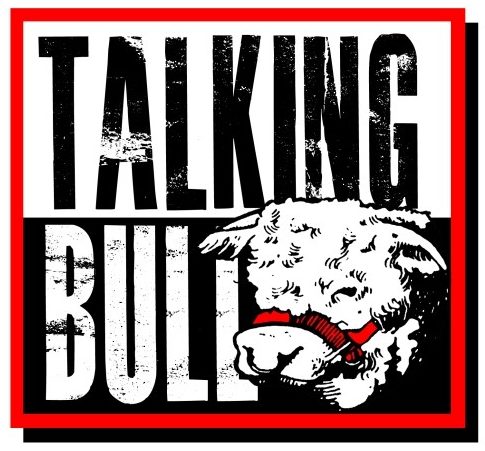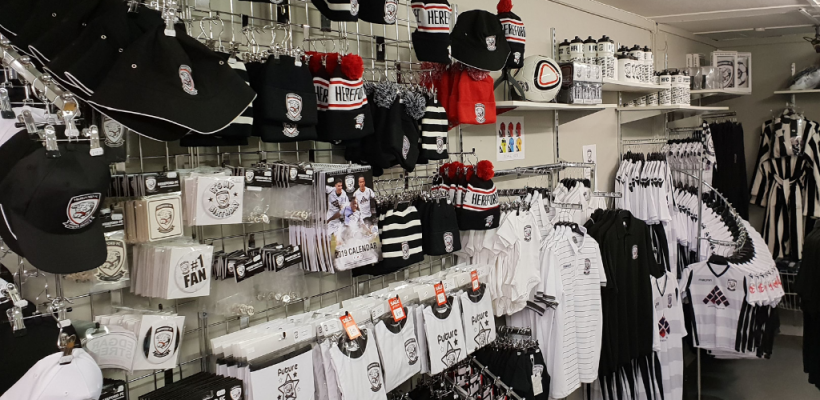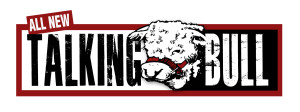With the season coming to an end on Saturday many supporters are wondering why Hereford have found the National League North so difficult to compete in this term.
One of the answers comes from the 2015 Talking Bull archives as Simon Wright explains.
Originally written a couple of years ago, the issues for both clubs remain the same. FC United will be relegated on a budget they’ve just revealed is only one third of the average National League North outlay while the Bulls are so much closer to the dilemma described.
The richly enjoyable friendly at Broadhurst Park, Manchester recently was a coming together of two new/ new-ish football clubs. Before, during and after the 90 minutes, Bulls and Rebel Reds discussed similarities between the two clubs and their futures.
FC United are completely supporter-owned with fans paying £12 a year for their co-owner status to have a say in all key decisions. Their club were formed in the main as an antidote to the rampant exploitation of supporters at Old Trafford. Famously, FCUM club kit is not sponsored and its design will only change if two thirds of the co-owners agree. Food and drink are back street pub prices. The excellent club programme has no external advertising. Admission prices are frankly retro for Step 2 with loads of concessions. The Rebel Reds challenges any home club who raises prices for their visit and also famously tried to fight off the BBC televising a Cup match. All these measures are fundamental to the club ethos that there is another way. As one fan put it “we prove you don’t need money or influence to make something really great.”
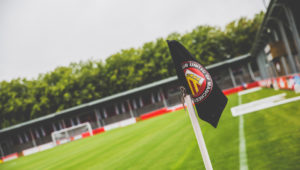 But behind the headlines all is not well at Broadhurst Park. There is a new board of directors, their predecessors ousted after accusations of poor communication and lack of transparency. New Boards normally means a new beginning but for FCUM, the problem are largely the same. They are outgunned financially in what is a very wealthy Conference North. New boys Salford City have five millionaires. AFC Fylde have just one millionaire, but one so wealthy he’s just funded a £12 million ground and made the entire playing squad full time. Arguably, all the relegated sides have better players. As we know, Kidderminster are full time. Halifax have the manager and core members of North Ferriby’s promotion side from last term. In addition, FC need to raise a further £1 million to complete their work-in-progress ground.
But behind the headlines all is not well at Broadhurst Park. There is a new board of directors, their predecessors ousted after accusations of poor communication and lack of transparency. New Boards normally means a new beginning but for FCUM, the problem are largely the same. They are outgunned financially in what is a very wealthy Conference North. New boys Salford City have five millionaires. AFC Fylde have just one millionaire, but one so wealthy he’s just funded a £12 million ground and made the entire playing squad full time. Arguably, all the relegated sides have better players. As we know, Kidderminster are full time. Halifax have the manager and core members of North Ferriby’s promotion side from last term. In addition, FC need to raise a further £1 million to complete their work-in-progress ground.
FCUM had 9 home defeats last season. Momentum is stalling… do they live within their means and accept further promotion will be a long time coming and accept a possible drift away of frustrated supporters or do they compromise with new fund raising avenues. The owners have to decide what is more important.
So what’s this got to do with Hereford FC?
Simply that the difficult decisions facing FCUM will be our headache too soon enough if we continue our upward momentum. Each extra step up the pyramid brings harder challenges and should we rise to Step 2, we’re likely to find both National League North and South including seriously minted clubs.
Hereford’s pricing reflects the commercial-focussed nature of our Board. It’s a highly valid business model and currently provides sufficient dosh to meet at least our most urgent needs and attract talent to our rural location. Our commercial leanings spare us from the difficult FCUM decisions around their core principles. But the broader question remains about how we will raise additional funds to meet future needs – without jeopardising our future.
It’s a dilemma every supporter-owned or part supporter-owned club have to face. The higher our League placing, the more revenue will be required, primarily to increase our player talent pool, patch up our ageing stadium and pitch while growing our own talent.
Relying on increased attendances is fool’s gold. Hereford United’s history tells us that locals will only turn out in big numbers for a winning team or glamourous opposition. That is regardless of status. Equally, heavily jacking up prices is a dangerous tactic in a low waged area.
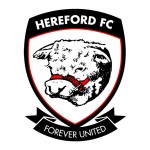 Hereford FC may be more resilient than its predecessor. But we’re not yet a core community hub for the city, reaching that essential point to persuade supporters to keep coming during difficult times. Herefordshire is a footballing backwater, always to be hobbled by geography, poor public transport and an ageing population. There is a limit as to how much further our average gate can rise and even if it did confound all expectations, we’d have to face up to the massive sapping expenditure of a new Blackfriars End.
Hereford FC may be more resilient than its predecessor. But we’re not yet a core community hub for the city, reaching that essential point to persuade supporters to keep coming during difficult times. Herefordshire is a footballing backwater, always to be hobbled by geography, poor public transport and an ageing population. There is a limit as to how much further our average gate can rise and even if it did confound all expectations, we’d have to face up to the massive sapping expenditure of a new Blackfriars End.
My own preference is to invest in an artificial surface at Edgar Street, a route just chosen by Alvechurch, Boldmere, Oxford City, Quorn, Redditch United and Tamworth, but I’ve already stated my case in a previous Talking Bull article, so I won’t it repeat here.
Previous Hereford owners have blindly chased money before with awful consequences. The current club structure thankfully builds in checks and safeguards. Monies coming in can only be accepted as a donation without any dividends or control offered in return. There’s much to commend this rule, but it comes at a cost.
There is a limit as to how many individuals will give Hereford significant money on this basis and secondly for each one who does, there is a requirement for HUST to match fund to maintain their 50% share ownership. There is only so many times HUST can realistically do this and its certainly not clear to me what would happen if the Trust are unable to do so. My concern would be around a dangerous drift towards private ownership, the desperately flawed model which has failed our club so many times in the past. It’s a tricky one.
I can see difficult decisions ahead and not too many risk-free options. Answers on a postcard please to the Board of Directors at Edgar Street.
